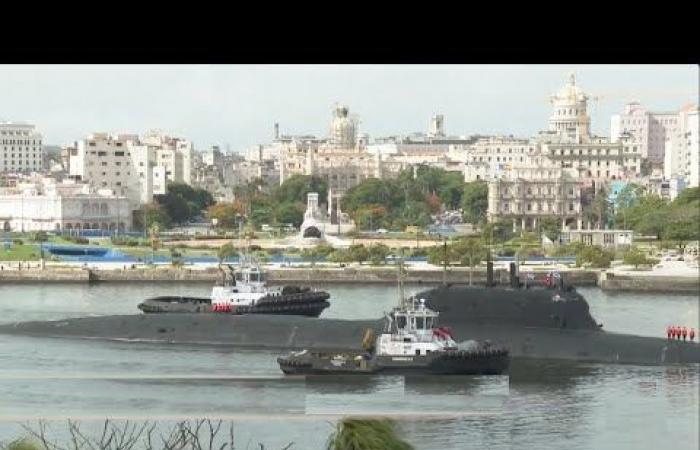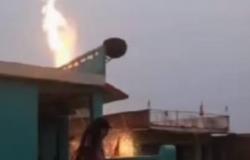Russia’s warship flotilla left the port of Havana on the way to what the United States seemed to suspect from the beginning were some type of military exercises in the waters of the Caribbean Sea.
The first to leave was the nuclear-powered submarine Kazan.
A statement from the Northern Fleet of the Russian Navy confirmed the departure of its warships from the island and added that “after leaving the territorial waters of Cubathe naval group will continue to carry out missions in accordance with the plan of its journey”, without detailing at this time what it would be.
Hours before his departure from the port of Havana, Russia allowed the designated ruler of Cuba, Miguel Díaz-Canel, to get on the deck of the nuclear-powered submarine Kazán, a visit prohibited for ordinary Cubans, who had to wait in another line. to see only the modern frigate Gorshkov, which spent five days in Havana and caused the mobilization of warships from the United States and Canada, which followed the trajectory of this flotilla towards the island.
This June 17, the warship Margaret Brooke of the Royal Canadian Navy also left Havana, docking on June 14 near the Russian flotilla.
This arrival of the Canadian ship generated controversy in their country.
In a statement, Daniel Minden, spokesperson for the Canadian Ministry of Defense, said that the visit of the Margaret Brooke to Cuba was carefully and exhaustively planned, authorized by the Minister of National Defense, Bill Blair, with the advice of the Royal Canadian Navy and the Canadian Joint Operations Command, and it was a “smart decision” to increase its naval presence in the region.
This spokesperson recalled that one of the Canadian warships and a patrol plane had been following the Russian flotilla along with those of the United States.
For his part, the leader of the Canadian Conservative Party, Pierre Poilievre, criticized this decision and said that “while our troops lack resources, (Justin) Trudeau spends our budget by sending a Canadian naval ship alongside the Russian naval ship, in honor the communist and brutal government of Cuba, proving that he is not playing when he says he admires the communist dictatorship. This is fearful, radical and dangerous.”
This is the first visit to Havana by the Canadian navy since 2016 and occurs right in the middle of the million-dollar aid and military equipment that Canada has delivered to Ukraine to confront the Russian invasion.
But while the Russian naval flotilla and the Canadian warship were in the port of Havana, the training ship Simón Bolívar of the Venezuelan Navy arrived through Santiago de Cuba on June 15.
They received him the same with 21 artillery salvos on his third trip to that city. Cubans will be able to visit it until June 18.
Meanwhile, also in response to the presence of Russian warships in Havana, from the Ukrainian city of Mycolaiv, on the front of the Russian invasion of Ukraine, activist Carolina Barrero sent a harsh message to the Cuban mercenaries recruited by the Putin’s army in this invasion, whom he called pawns of the corrupt geopolitics of Moscow and Havana.
#Cuba






